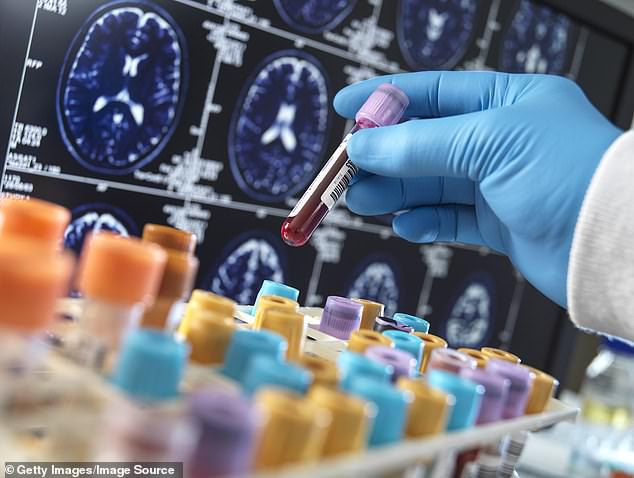A new pill could stop Alzheimer’s disease by prompting the brain to “rewire itself.”
The experimental tablet, called BnH-101, is designed to enhance neuroplasticity, or the brain’s ability to reorganize its connections after being damaged by disease or injury.
In tests on mice, the pill caused new connections to form between nerve cells in the cerebral cortex, the part of the brain responsible for memory, learning and emotions, leading to improved scores on memory tests.
Crucially, the pill also reduced the formation of harmful amyloid plaques. These proteins in the brain are thought to be a key factor in the development of the disease.
A trial involving dozens of people with Alzheimer’s is now underway in South Korea to try to replicate the initial findings.
The experimental pill, called BnH-101, is designed to enhance neuroplasticity. (File image)

The disease is characterized by an abnormal buildup of proteins in the brain. (File photo)
More than 900,000 people in the UK have Alzheimer’s and that number is expected to rise to 1.4 million by 2040, due in part to an ageing population.
The disease is characterized by the abnormal accumulation of proteins in the brain. In addition to amyloid plaques, another protein called tau is found that forms tangles in brain cells.
Several new drugs have emerged in the past two years that appear to slow some of the damage caused by the disease. One of them, lecanemab, last month became the first disease-modifying drug to be approved in the UK. However, it is only available in the private sector, as the NHS spending watchdog, the National Institute for Health and Care Excellence, said the benefits do not justify the costs, estimated at around £20,000 per patient per year.
Scientists at BnH Research, the South Korean company developing the new pill, predict it will be a more effective way to combat the disease.
It is designed to stimulate a brain protein called GluN2B, which plays a key role in improving the brain’s neuroplasticity – its ability to generate new nerve cells that can prevent damage caused by, for example, a stroke or Alzheimer’s.
Activating the process has been shown to have benefits for the brain. In cases of stroke, for example, repeated rehabilitation exercises involving paralyzed limbs can help the brain form new nerve connections that allow patients to learn to walk and talk again.
A 2023 study of mice with an Alzheimer’s-like disease showed that those given the new drug scored much better on memory tests than those given a dummy version.

Scientists at BnH Research, the South Korean company developing the new pill, predict it will be a more effective way to combat the disease. (File photo)

More than 900,000 people in the UK have Alzheimer’s and the number is expected to rise to 1.4 million by 2040. (File image)
The mice were exposed to a very mild, slightly painful electric current. The researchers then observed who remembered to avoid it the next time.
The new trial in South Korea will test different doses of the drug in people with and without Alzheimer’s disease. Results are expected in a few years.
James Rowe, consultant neurologist at Addenbrooke’s Hospital and professor of cognitive neurology at the University of Cambridge, said: “This new drug could work in a number of ways. Some of these are based on mechanisms already used by existing drugs, such as strengthening connections in the brain, reducing inflammation and helping plasticity.
‘The combination of these complementary effects could be an advantage, but making the leap from the lab to humans can be challenging.

